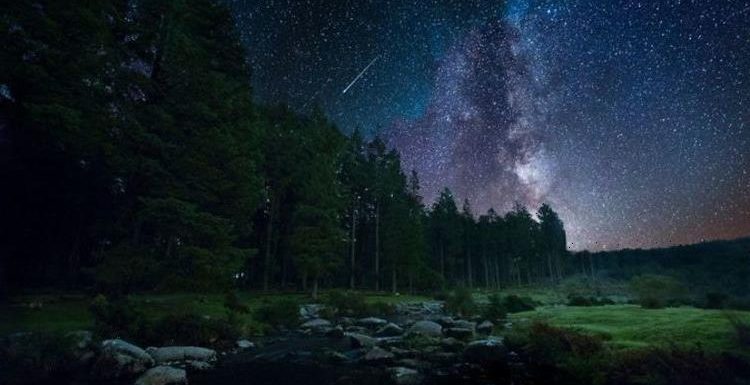
Meteor spotted in night sky over Northern Ireland
When you subscribe we will use the information you provide to send you these newsletters. Sometimes they’ll include recommendations for other related newsletters or services we offer. Our Privacy Notice explains more about how we use your data, and your rights. You can unsubscribe at any time.
The majority of Scotland and Northern Ireland were treated to a stunning fireball on May 26. While the meteor could also be seen in the south of the UK, the majority of sightings came north of the border. According to analysis from the International Meteor Organisation (IMO), the meteor entered the skies around central Scotland.
By the time it flew over the island of Skye, it was fading out.
More than 100 people reported seeing the blazing meteor, with witnesses flocking to the IMO to detail their sighting.
Adam said: “It was like no other ‘shooting star’ I’ve seen.
“Almost looked like a rocket part or something… burning up. It was phenomenal to me.”
Lynn stated: “It appeared suddenly as a bright white circle over the Queensferry crossing and moved towards Dunfermline where it suddenly got dull and disappeared well above ground level.”
Gail said: “I’ve seen lots of shooting stars, this was way lower and so much bigger, definitely looked like it would hit the ground.”
Eleanor added: “It was bright white sort of ball with tail but no trail very fast and straight-lined. Seemed low just above roofs.”
Ann said: “Have seen several meteors crossing sky at speed before but nothing like this.
“Came directly down behind mountain at the back of the village.
“Slower moving and very white light and noticeably large. My husband and I stopped for approximately four seconds to watch it fall. Small bits of light directly behind it.”
Thankfully, the meteor did not make land and the explosion can be attributed to a small meteor hitting the atmosphere.
Meteors can produce such an intense burst of light, as air – which they had not encountered before they hit Earth’s atmosphere – gets into the pores of the rocks, forcing them to explode.
The IMO said: “Fireballs are meteors that appear brighter than normal.
“Due to the velocity at which they strike the Earth’s atmosphere, fragments larger than one millimetre have the capability to produce a bright flash as they streak through the heavens above.
“These bright meteors are what we call fireballs and they often strike fear and awe for those who witness them.”
Source: Read Full Article



